
Take care of yourself and your family!
The summer heat can be uncomfortable and make you perspire more than usual, creating the perfect environment for fungus that can develop everywhere on your skin. So it’s very common to get a fungal infection in summer.
Now the good news is that they’re mostly easy to treat and they only cause some discomfort. However, more serious diseases can occur in immunocompromised persons like HIV and cancer patients.
What are these nasty infections and what do they look like?
Common fungal infections
Every person has probably had to deal with a fungal infection at one point in their lives.
Fortunately superficial fungal infections are much more common than systemic infections which affect internal organs like the lungs, blood and liver.
Here are some of the most common superficial infections which might appear on the skin, nails and hair.
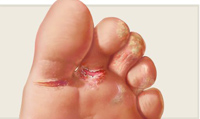
1. Athlete’s foot or Tinea Pedis is a fungal infection of the feet with itching, scaling and redness. It can be caused by a number of different fungi.
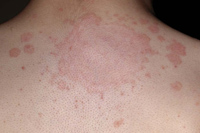
2. Ringworm or Tinea Corporis can appear in the form of a red or silver rash anywhere on the body. It is usually ring-shaped.
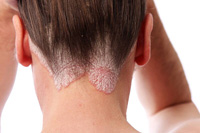
3. Tinea Capitis is ringworm that affects the scalp.
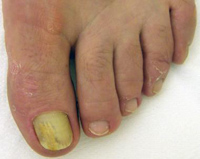
4. Onychomicosis is a fungal infection of the toenails or fingernails. It can cause pain, discomfort and disfigurement. Onychomycosis is caused by various fungal organisms, the most common being dermatophyte.
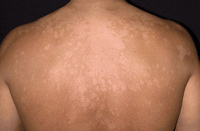
5. Tinea Versicolor or pityriasis versicolor is a common condition that causes small patches of skin to become scaly and discoloured. They can be darker or lighter than the surrounding skin, or even red or pink. The condition is caused by a yeast called which lives on the skin of most people without causing any problems.
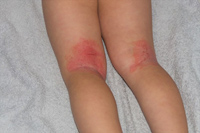
6. Cutaneous Candidiasis can involve almost any skin area of the body, but mostly occurs in warm, moist, creased areas such as the armpits and between the legs. Candida is the most common cause of diaper rash in babies.

1. In hot, humid weather
The cause: Impetigo is a contagious skin infection that is especially common among children. It causes lesions on the exposed areas of the arms and legs as well as the face, which start out as red patches and then develop into blisters. Children are especially more prone to impetigo in summer as the bacteria flourish in warmer conditions.
Avoid it: Pay attention to scrapes or insect bites as bacteria can be spread via these wounds. Encourage your children to wash their hands properly, especially after playing outside.
2. Wearing sweaty underwear and clothing
The cause: Jock itch is caused by the same fungus that causes athlete’s foot and it’s an extremely itchy rash that occurs in the crease between the thighs. Jock itch is often picked up at the gym or can spread from your feet when you pull up your pants.
Avoid it: Wear loose-fitting underwear and always change your underwear between gym sessions. It’s also preferable to stick to cotton underwear as synthetic materials can cause more sweating.
3. Wearing sweaty socks and shoes
The cause: If you wear closed shoes to work or if you work out a lot, your sweaty socks create the perfect environment for athlete’s foot.
Avoid it: Let your feet breathe – go barefoot or wear opened-toed shoes whenever you can. Always take off your sweaty gym socks as soon as you’ve finished exercising.

4. At public pools and showers
The cause: If you use the swimming pool at the gym, or if you like to take a shower after splashing in the ocean, you are more susceptible to the athlete’s foot infection that causes redness, itchiness and cracked skin between the toes.
Avoid it: Always wear flip-flops when using public-shower facilities, and make sure the areas between your toes are completely dry.
5. Staying in wet swimwear
The Cause: Sitting around in your wet swimwear all day long in summer makes girls more susceptible to yeast infections, since it creates the perfect condition for fungus to breed.
Avoid it: Always take a change of dry clothes to the beach or pool and change immediately after bathing.

If you think you have an infection, but you’re not sure, quickly ask your pharmacist until you get the chance to see your dermatologist. Act on it, don’t let it spread!